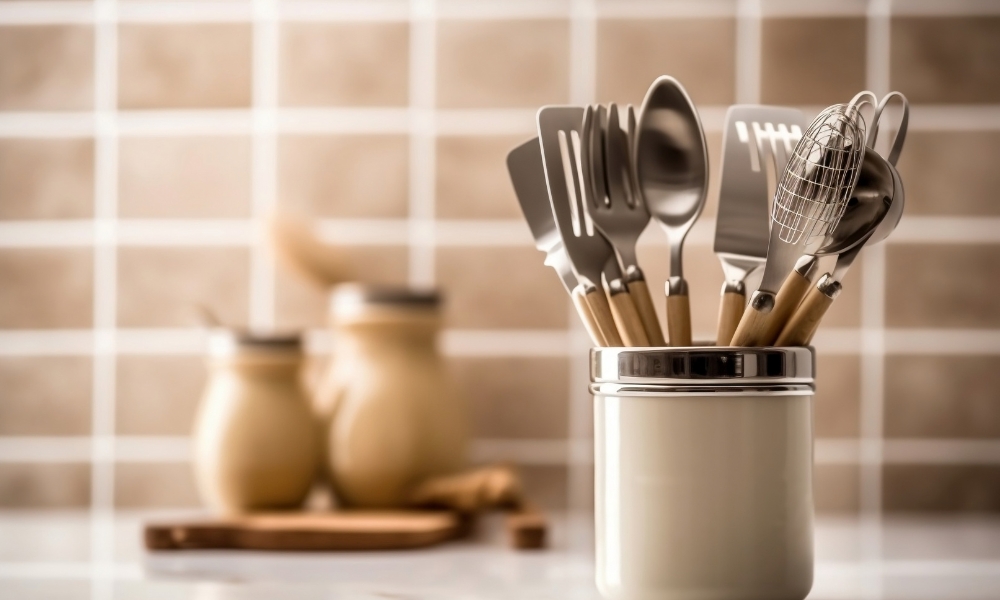Selecting the right tools for your kitchen is crucial for both your health and culinary success. “What is the safest material for cooking utensils” is a fundamental question for anyone committed to maintaining a healthy cooking environment. With various options available, including silicone, wood, bamboo, stainless steel, nylon, glass, and ceramic, each material offers unique benefits and potential drawbacks. Understanding which materials are safest can help prevent harmful chemicals from contaminating your food, ensuring your kitchen remains a safe and enjoyable space for meal preparation. This guide delves into the safest materials for cooking utensil, providing insights to help you make informed decisions.
Can Wooden Utensils Harbor Bacteria?
When selecting cooking utensils, safety is a crucial consideration. One common concern is whether wooden utensil can harbor bacteria. Wood is a natural material, and while it can develop cracks and grooves where bacteria might reside, proper care can mitigate this risk. Regularly cleaning wooden utensils with hot soapy water and allowing them to dry completely can prevent bacterial growth. Additionally, many studies suggest that wood has natural antimicrobial properties, making it a surprisingly safe choice when maintained correctly.
How Do I Choose The Best Cooking Utensils?
Choosing the best cooking utensil involves considering several factors beyond just material safety. Durability, heat resistance, and the type of cooking you do are all important. Stainless steel utensils are a popular choice due to their strength and resistance to high temperatures, making them ideal for a variety of cooking tasks. Silicone utensils, known for their flexibility and non-stick properties, are excellent for use with non-stick cookware. They also withstand high temperatures without releasing harmful chemicals. Wooden utensils, valued for their gentle touch on cookware surfaces, are perfect for stirring and serving. Evaluating these factors can help you select utensil that are not only safe but also enhance your cooking experience.
Best Cooking Utensils
1. Silicone
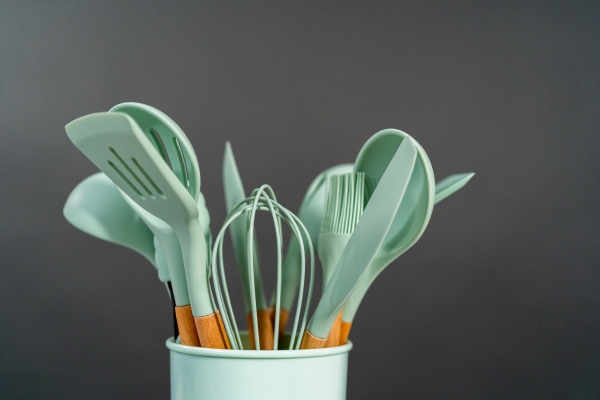
Silicone utensil are a favorite in modern kitchens. They are heat-resistant, often withstanding temperatures up to 600°F, making them perfect for a variety of cooking tasks. Silicone is non-stick and won’t scratch your cookware. It’s also easy to clean, often dishwasher safe, and does not harbor bacteria due to its non-porous nature.
2. Wood
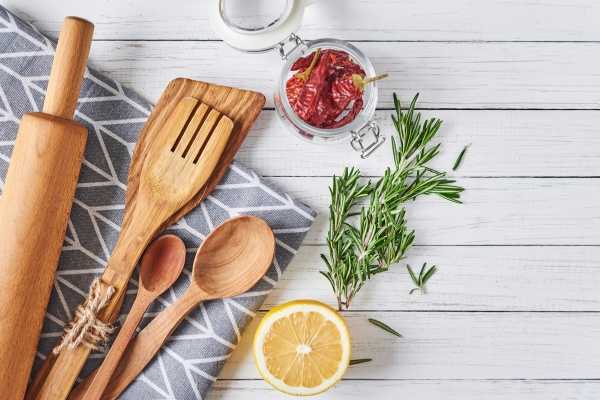
Wood utensil have been a kitchen staple for centuries due to their durability and gentle touch on cookware surfaces. While wood can harbor bacteria if not properly maintained, regular cleaning and thorough drying keep these utensils safe. Many types of wood, like maple and beech, have natural antimicrobial properties, adding an extra layer of safety. Wood utensil are also aesthetically pleasing, adding a rustic charm to any kitchen.
3. BambooBamboo Cooking Utensils3. Bamboo
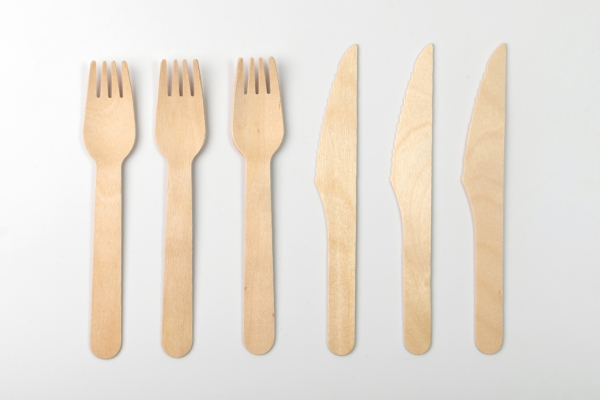
Bamboo utensils offer a sustainable and eco-friendly alternative. Bamboo grows quickly and is a renewable resource, making it an environmentally conscious choice. Bamboo utensils are strong, lightweight, and resistant to moisture and staining, which helps prevent bacterial growth. Like wood, bamboo is gentle on cookware and can be maintained easily with regular cleaning and drying. Bamboo’s natural beauty and eco-friendliness make it an attractive option for those looking to reduce their environmental footprint.
4. Stainless steel
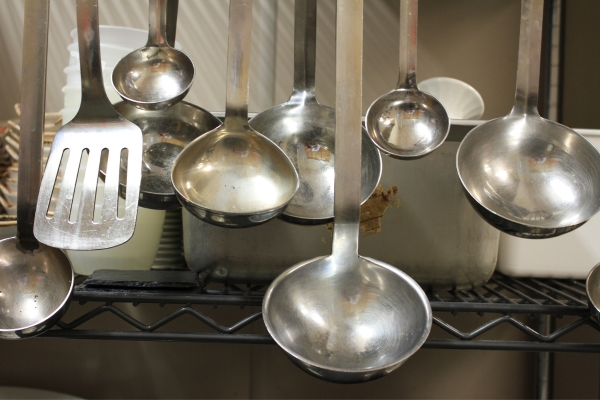
Stainless steel utensils are renowned for their strength and durability. They can withstand high temperatures and are resistant to rust and corrosion, making them ideal for heavy-duty cooking tasks. Stainless steel utensil do not react with acidic foods, ensuring the taste and quality of your meals remain unchanged. Additionally, they are easy to clean and often dishwasher safe, providing convenience along with durability.
5. Nylon
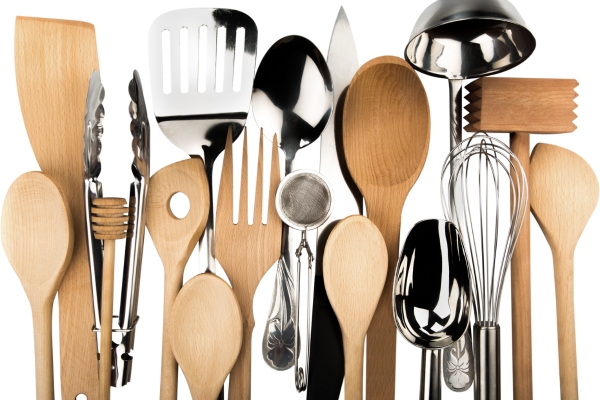
Nylon utensils are valued for their affordability and versatility. They are gentle on non-stick cookware, preventing scratches and damage. Nylon utensils can withstand moderate heat but should not be exposed to extremely high temperatures as they can melt. They are lightweight, easy to handle, and typically dishwasher safe, making them a practical choice for everyday cooking.
6. Glass

Glass utensil, though less common, offer unique advantages. Glass does not react with food, ensuring the purest taste, and is non-porous, preventing bacteria buildup. Glass utensils can handle high temperatures, making them suitable for both cooking and serving. However, they are more fragile than other materials and require careful handling to avoid breakage.
7. Ceramic
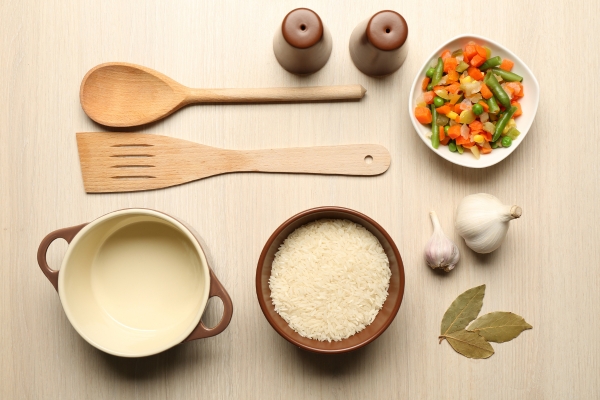
Ceramic utensils are another excellent option for a safe and non-toxic cooking experience. Ceramic is non-reactive, which means it won’t leach chemicals into your food. These utensil are also heat-resistant and can handle high temperatures without breaking down. Ceramic utensil are easy to clean and maintain, though they can be more fragile than metal alternatives. They add a touch of elegance to your kitchen with their sleek and colorful designs.
Are Non-Stick Pans Safe to Use?
Non-stick pans, coated with substances like Teflon, offer the advantage of easy food release and simple cleanup. However, their safety has been a topic of debate. When used correctly, non-stick pans are generally safe. It’s essential to avoid overheating them, as extremely high temperatures can cause the coating to break down and release potentially harmful fumes. Using non-stick pans over medium heat and avoiding metal utensils that can scratch the surface can prolong their life and maintain their safety. Additionally, many modern non-stick pans are now made without PFOA, a chemical previously linked to health concerns, making them safer than older versions.
Conclusion
Choosing the best cooking utensils involves balancing safety, functionality, and personal preferences. Whether you opt for silicone, wood, bamboo, stainless steel, nylon, glass, or ceramic, each material brings unique benefits that can enhance your cooking experience while ensuring your kitchen remains a safe and healthy environment. By understanding the properties and care requirements of each material, you can make informed decisions that contribute to the well-being of those enjoying your culinary creations. Non-stick pans, when used correctly, can also be a safe and convenient addition to your kitchen arsenal.
